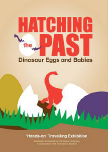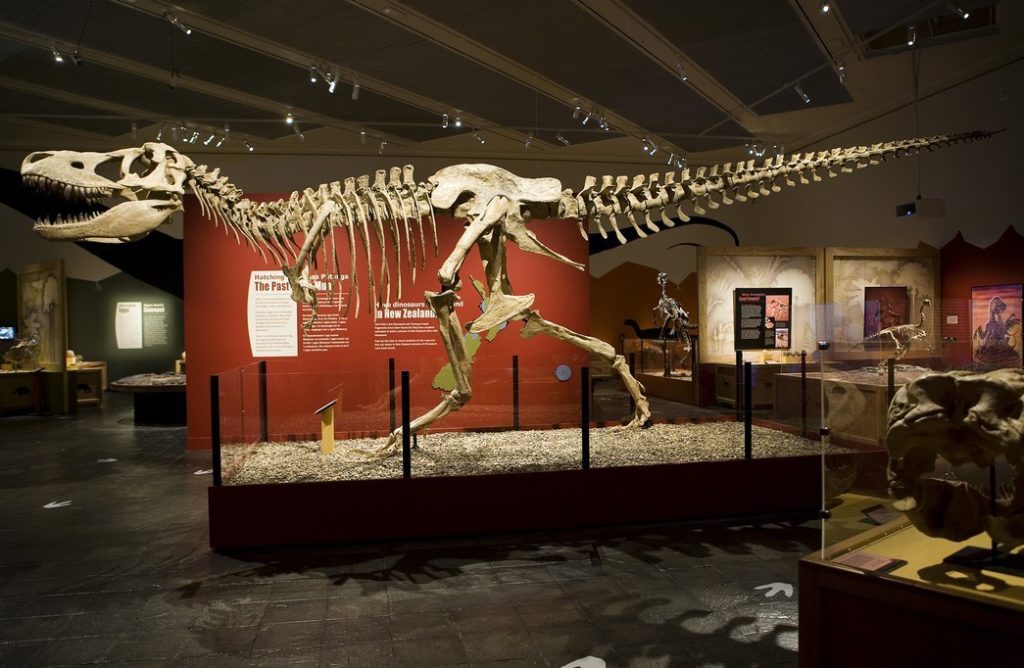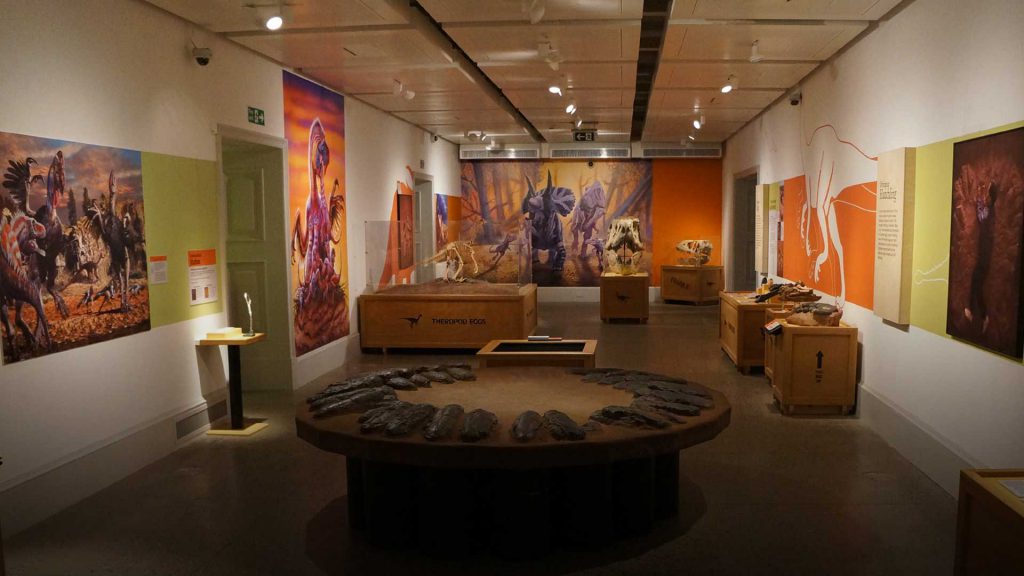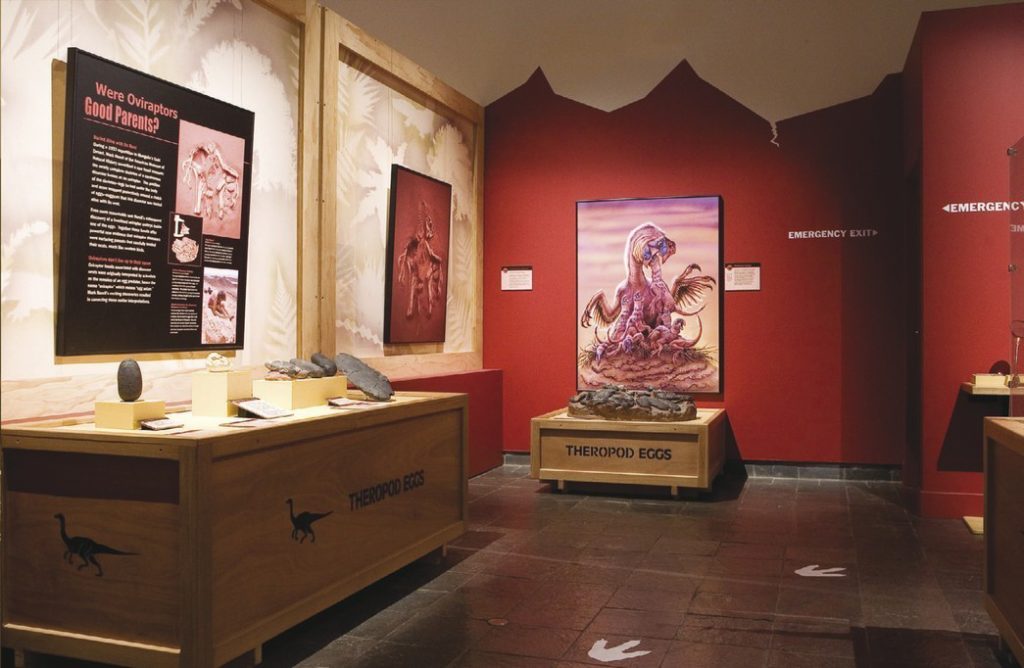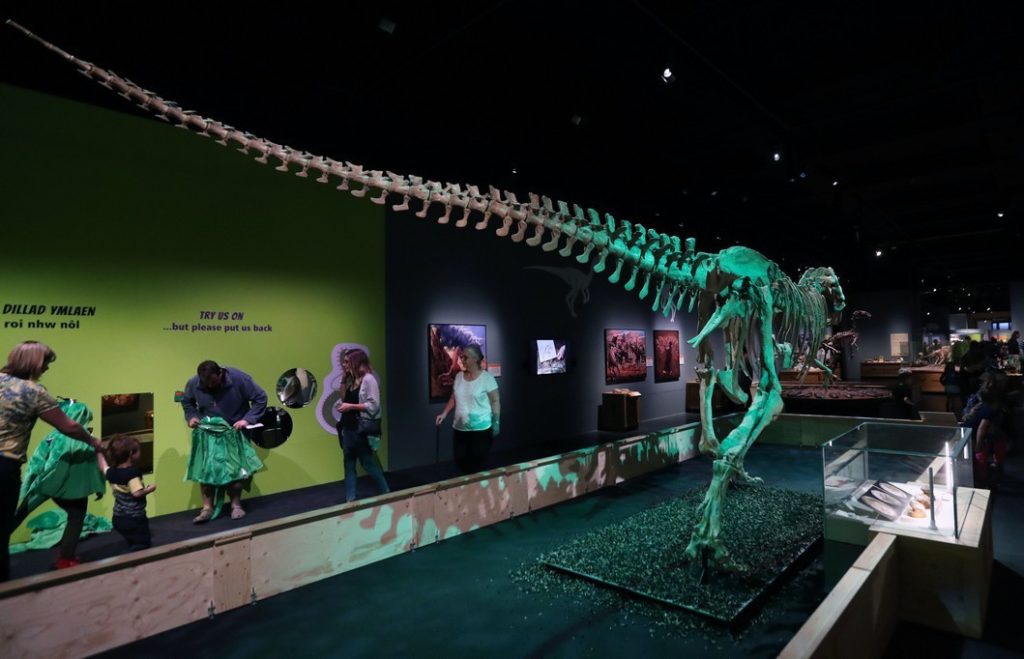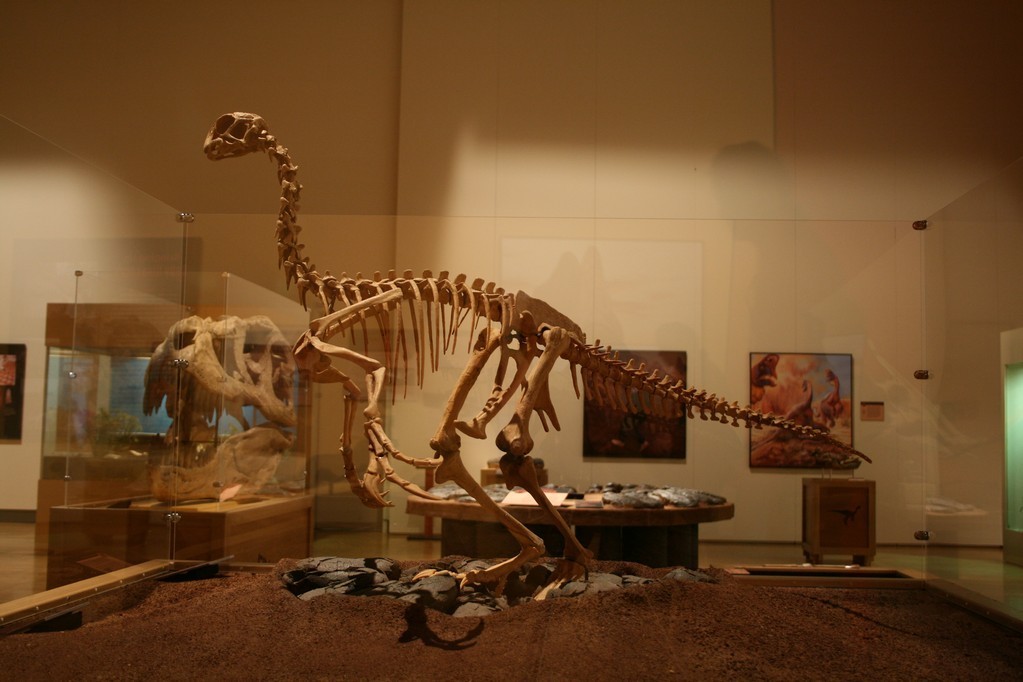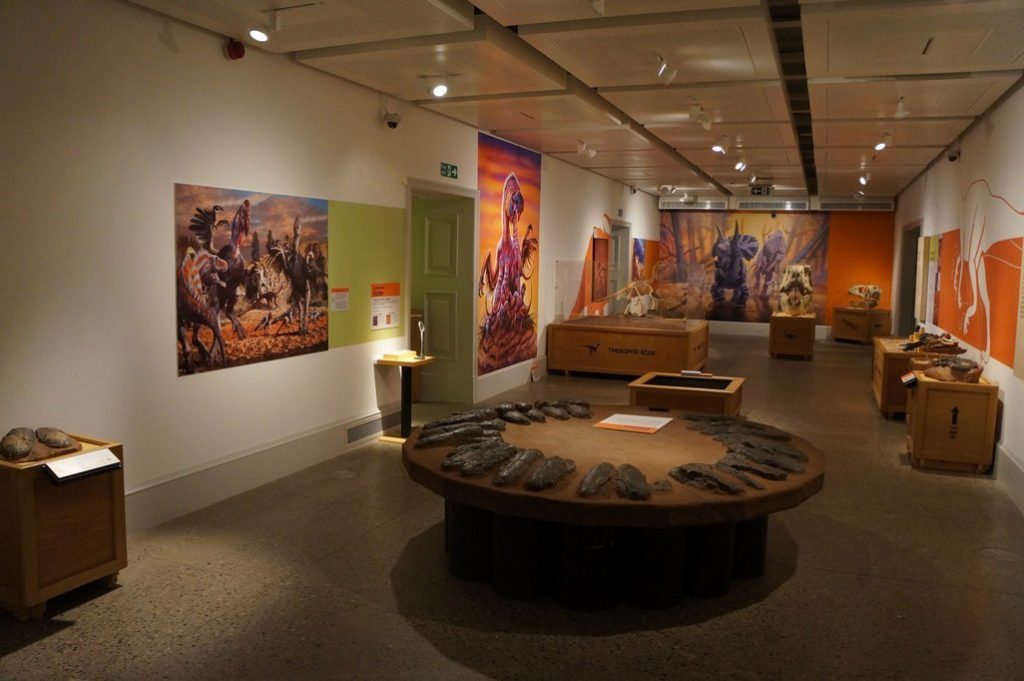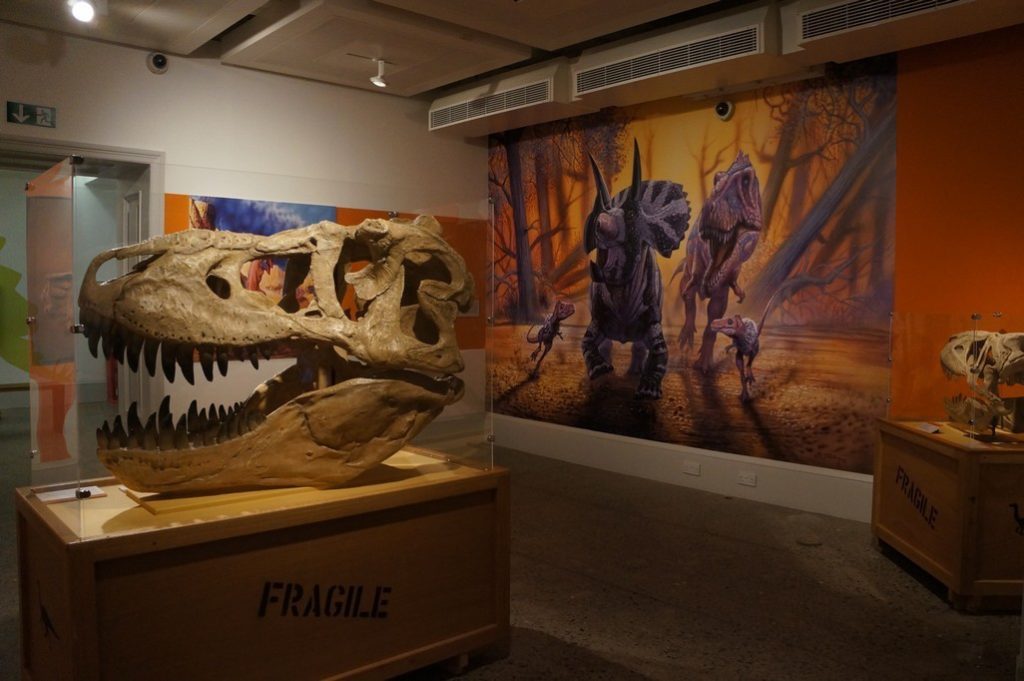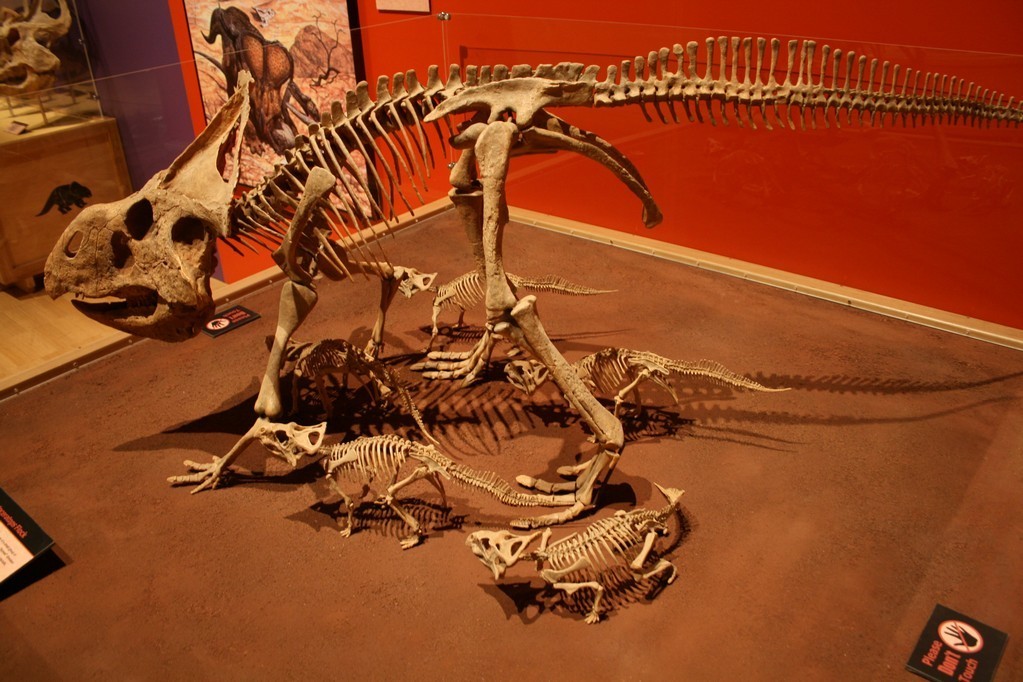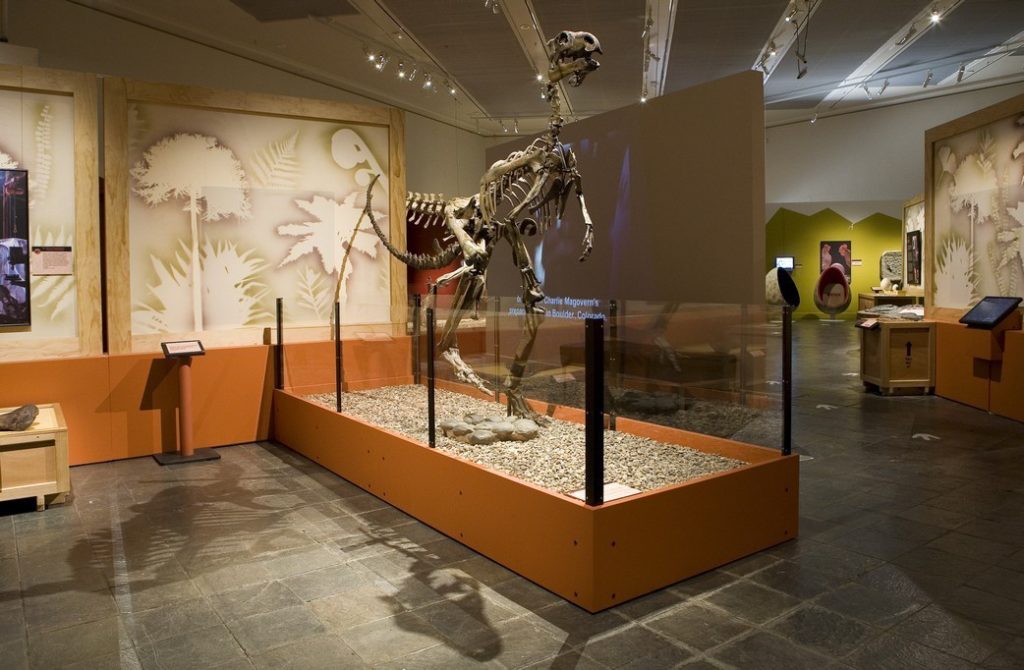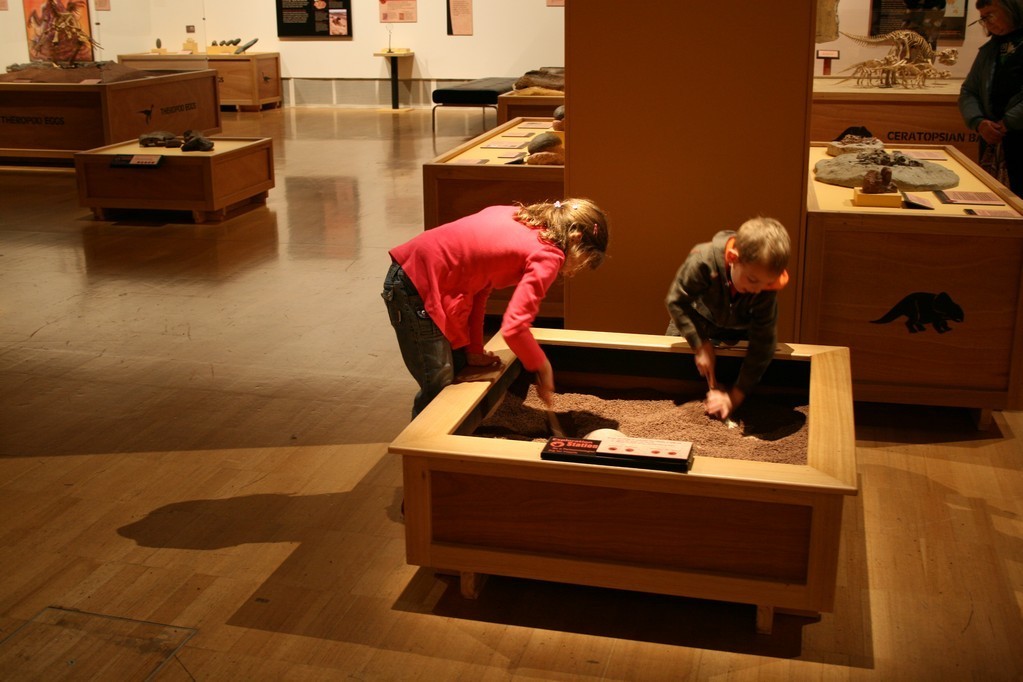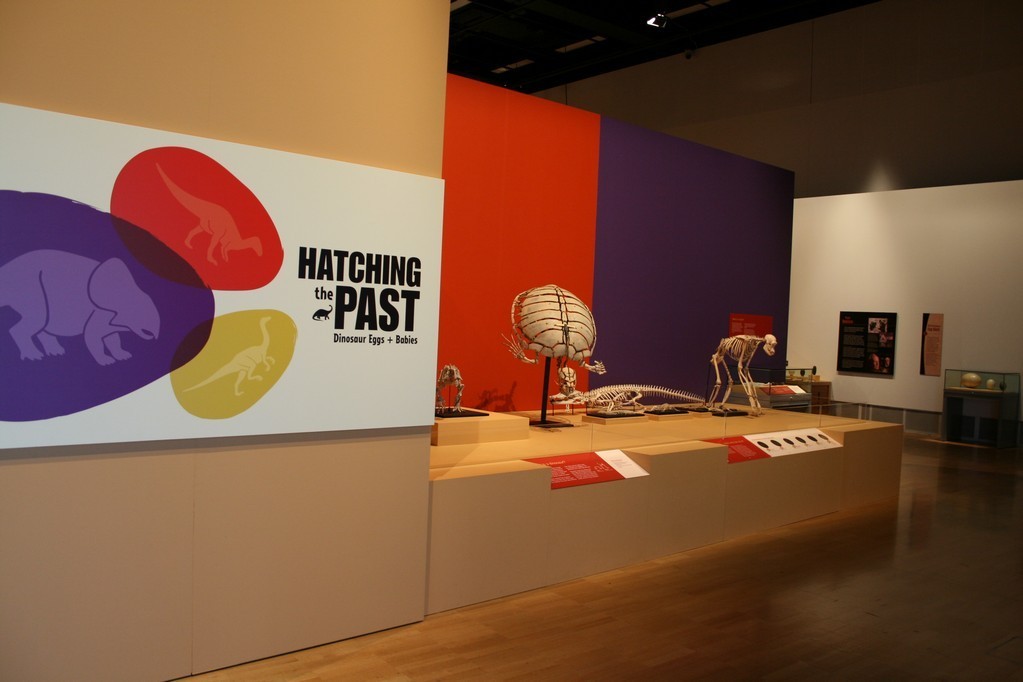DINOSAUR EGGS & BABIES
Hatching the Past: Dinosaur Eggs & Babies takes a rare and exciting look at the life of dinosaurs through their eggs, nests, and embryos. The exhibition blends the arts and sciences with an astounding array of dinosaur eggs and nests collected from all over the globe, including those of each major plant and meat-eating dinosaur group.
This exhibition was first developed in 2002 by StoneCompany.com with the support of Harvard Museum of Natural History. Following its success in the US, Hatching the Past started its international tour in 2008.
Gondwana Studios offers institutions the opportunity to host this unique and captivating exhibition, which will be custom designed to suit individual requirements.

Take a rare and exciting look at the life of dinosaurs through their eggs, nests and embryos in Hatching the Past: Dinosaur Eggs and Babies. This remarkable hands-on exhibition offers an astounding array of dinosaur eggs and nests collected from all over the globe – including those of each of the major plant and meat-eating dinosaur groups.
Although dinosaur eggs were first identified in the 1920’s, their scientific significance was not fully appreciated until the end of the 20th century. Today, dinosaur eggs are recognized for their enormous scientific value and for offering fascinating details and fresh insights into the behaviour, growth, and evolution of dinosaurs.
Hatching the Past presents new discoveries about dinosaur reproduction and behaviour and introduces some of the fascinating people and science behind these discoveries. This multi-media experience helps give credence to long debated theories that dinosaurs and birds are closely related.
A captivating experience for all ages, Hatching the Past invites visitors to touch real dinosaur bones and reconstructed nests-one more than eight feet in diameter, dig for eggs, experience hands-on exploration stations, and view animated video presentations featuring well known dinosaur experts. Each science-rich section is enhanced with exciting life-like models of embryos and hatchlings, colourful illustrations of dinosaur family life and stunning photographs of some of the world’s most renowned dinosaur hunters and their discoveries.
The amazing collection of fossils on view includes a bowling ball-sized egg of a sauropod from Argentina – laid by a long-necked plant-eating titanosaur that lived 75 million years ago; a large cluster of eggs laid by a duck-billed, plant-eating dinosaur, and the longest dinosaur eggs ever discovered – almost 18 inches long – laid by a new giant species of oviraptor, a carnivorous, ostrich-like dinosaur.
A central feature of the exhibit is “Baby Louie,” – the nearly complete skeleton of a dinosaur embryo with its bones aligned in the proper position. Charlie Magovern made this exceptional and rare discovery when he was carefully cleaning a large block of eggs from China. He nicknamed the embryo after National Geographic photographer Louie Psihoyos. Visitors can also view an animated presentation about the discovery of “Baby Louie.”
Exhibition Includes:
- More than 150 authentic replicas and fossils of dinosaur eggs from different parts of the world, representing different families of dinosaurs.
- Replicas of complete dinosaur skeletons (15 articulated).
- Dinosaur skulls illustrating their different stages of growth.
- Scale reconstructions, including 6 models of embryos and offspring, made by well-known paleo-sculptors Brian Cooley, Dennis Wilson and William Monteleone.
- Interactive stations, including 3 excavation pits to unearth fossils, 8 ‘touch’ eggs, 2 stations with magnifying glasses to observe dinosaur skin, 5 ‘question and answer’ stations, and 1 authentic dinosaur bone to touch.
- 4 documentaries featuring expert paleontologists Robert Bakker, Phillip Currie, Mark Norell and others (in English).
- 5 photographs mounted on large-format panels by National Geographic photographer Louie Psihoyos of the most famous ‘dinosaur hunters’ and their discoveries.
- 11 framed reproductions of paleo-art works by Luis Rey and Mark Hallett.
- 8 ‘Explore and Discover’ text panels.
- 7 section texts panels.
Specifications & Exhibition Display Area
The standard size of the exhibition is 300-600m2. However, it provides flexibility to accommodate larger or smaller rooms and exhibition spaces, depending on the requirements of the exhibition venue.
To be provided by the hosting venue:
- Scenery, backdrops, lights and barriers.
- Single-phase electrical supply.
- Translation of text (if necessary) and production of text panels and graphics.
- Transportation costs and insurance (transit and public liability) for exhibition.
- Equipment required for access, installation and dismantling.
- Skilled support staff to assist with installation and dismantling.
- Storage facilities for transport cases.
- Promotion and publicity.
- Staffing during exhibition run.
Duration and Hire Fee
The standard duration of exposure is 3 months. Longer or shorter periods can be organized according to the requirements of the exhibition venue.
Lease fee available on request.
Audiences
The content of the exhibition has been designed to attract an audience made up of both adults accompanied by children (family groups) and educational and school groups, to whom it will provide a unique, interactive and stimulating experience.
Communication Objectives
The educational objectives of the exhibition are the following:
- Promotion of learning about the family life of dinosaurs, and how they cared for their young.
- Development of a greater appreciation of the importance of fossils of eggs, young and embryos in the study of dinosaurs.
- Find out about fascinating paleontologists and their significant discoveries
- Understanding of the complex ‘design’ of the egg structure.
- Learn to identify eggs from different dinosaur groups, based on their shape and texture.
Exhibition produced by: StoneCompany.com
Exhibit Design and Production Support:
- Harvard Museum of Natural History, Cambridge, Massachusetts
- Bruce Museum of Arts and Science, Greenwich, Connecticut
- Frank McClung Museum, University of Tennessee, Knoxville
- Peabody Museum, Yale University, New Haven, Connecticut
Past Host Venues
Past ‘Dinosaur Eggs & Babies’ venues by size – North America
400 -600 square meters (4,000 – 6,000 sq ft)
- Academy of Natural Sciences of Drexel University, Philadelphia, Pennsylvania
- Cranbrook Institute of Science, Bloomfield Hills, Michigan
- Danville Science Center, Danville, Virginia
- Don Harrington Discovery Center, Amarillo, Texas
- Florida Museum of Natural History, Gainesville, Florida – twice
- Hastings Museum of Natural History, Hastings, Nebraska
- Museum of Idaho, Idaho Falls, Idaho
- Orlando Science Center, Orlando, Florida
- Sam Noble Oklahoma Museum of Natural History, Norman, Oklahoma
- Science Spectrum, Lubbock, Texas
- Virginia Living Museum, Newport News, Virginia – twice
200 -300 square meters (2,000 – 3,500 sq ft)
- Catabwa Science Center, Hickory, North Carolina
- Delaware Museum of Natural History, Wilmington, Delaware – twice
- Eastern Tennessee State University Natural History Museum, Gray, Tennessee
- Fullerton Museum Center, Fullerton, California
- Impression 5 Science Center, Lansing, Michigan
- Kenosha Public Museum, Kenosha, Wisconsin – twice
- Lakeview Museum of Arts and Science, Peoria, Illinois
- Las Vegas Natural History Museum, Las Vegas, Nevada
- Mid-America Science Museum, Hot Springs, Arkansas
- Mississippi Museum of Natural Science, Jackson, Mississippi
- Museum of Science and History, Fort Worth, Texas
- Neville Public Museum, Green Bay, Wisconsin
- New Jersey State Museum, Trenton, New Jersey
- Pacific Science Center, Seattle, Washington
- Planetario Alfa, Monterrey, Mexico
- Science Center of Connecticut, West Hartford, Connecticut
- SciTech Hands on Museum, Aurora, Illinois
- Springfield Science Museum, Springfield, Massachusetts
- State Historical Society, Des Moines, Iowa
- Sternberg Museum of Natural History, Hays, Kansas
- Whitaker Center for Science and the Arts, Harrisburg, Pennsylvania
- Yale Peabody Natural History Museum, New Haven, Connecticut – twice
110 – 190 square meters (1,100 – 1,900 sq ft)
- Arizona Museum of Natural History, Mesa, Arizona
- Bruce Museum of Arts and Science, Greenwich, Connecticut
- Frank McClung Museum, University of Tennessee, Knoxville, Tennessee – twice
- Georgia Southern University, Statesboro, Georgia
- Harvard Museum of Natural History, Cambridge, Massachusetts
- Hi Desert Nature Center, Yucca Valley, California
- Las Cruces Museum of Natural History, New Mexico – twice
- Leahy Center for Lake Champlain, Burlington, Vermont
- Montshire Museum of Science, Norwich, New Hampshire – twice
- Museum of Arts & Sciences, Macon, Georgia
- Museum of Science and History, Jacksonville, Florida
- Museum of the Earth, Paleontological Research Institution, Ithaca, New York
- Quarry Hill Nature Center, Rochester, Minnesota
- Rawlins Public Library, Pueblo, Colorado
- Schiele Museum of Natural History, Gastonia, North Carolina – twice
- University of Colorado Museum of Natural History, Boulder, Colorado
- University of Oregon, Museum of Natural and Cultural History, Eugene, Oregon
100 square meters (1,000 sq ft and smaller)
- Aurora History Museum, Aurora, Colorado
- Classical Chinese Garden, Portland, Oregon
- Colburn Museum, Ashville, North Carolina
- Explorium of Lexington, Lexington, Kentucky
- Hi Desert Museum, Yucca Valley, California
- Mt Airy Museum of Regional History, Mt. Airy, North Carolina
- Saint George Dinosaur Discovery Center, Saint George, Utah
- The Museum, Greenwood, South Carolina
- University of Kansas Museum of Natural History, Lawrence, Kansas
International
200 -1000 square meters (2,000 – 10,000 sq ft)
Australasia
- Australian Fossil and Mineral Museum, Bathurst, NSW, Australia
- Imaginarium Science Centre, Devonport, Tasmania, Australia
- Melbourne Museum, Melbourne, Victoria, Australia
- Museum of Tropical Queensland, Townsville, Queensland, Australia
- National Wool Museum, Geelong, Victoria, Australia
- Newcastle Museum, Newcastle, Australia
- Otago Museum, Dunedin, New Zealand
- Queen Victoria Museum & Art Gallery, Launceston, Tasmania, Australia
- South Australian Museum, Adelaide, South Australia, Australia
- Waikato Museums, Hamilton, New Zealand
Europe
- Museo del Jurásico de Asturias (MUJA), Asturias, Spain
- Città della Scienza (City of Science), Naples, Italy
- Centre d’Interpretació de Coll de Nargó, Spain
- Institut Català de Paleontologia Miquel Crusafont (ICP), Catalunya, Spain
- Horniman Museum, London, England
- National Museum of Scotland, Glasgow, Scotland
- National Museum Cardiff, Wales
- Natural History Museum of Denmark, Denmark
- Naturama, Svendborg, Denmark
- Geomuseum, Faxe, Denmark
- State Museum of Natural History, Braunschweig, Germany
Booking Information
Gondwana Studios Pty Ltd
E: info@gondwanastudios.com
T: +61 418 367 282 (WhatsApp)
